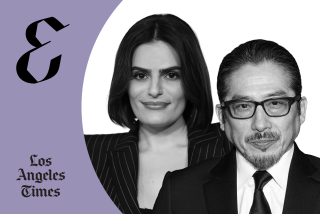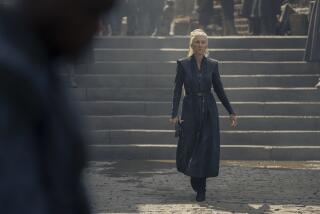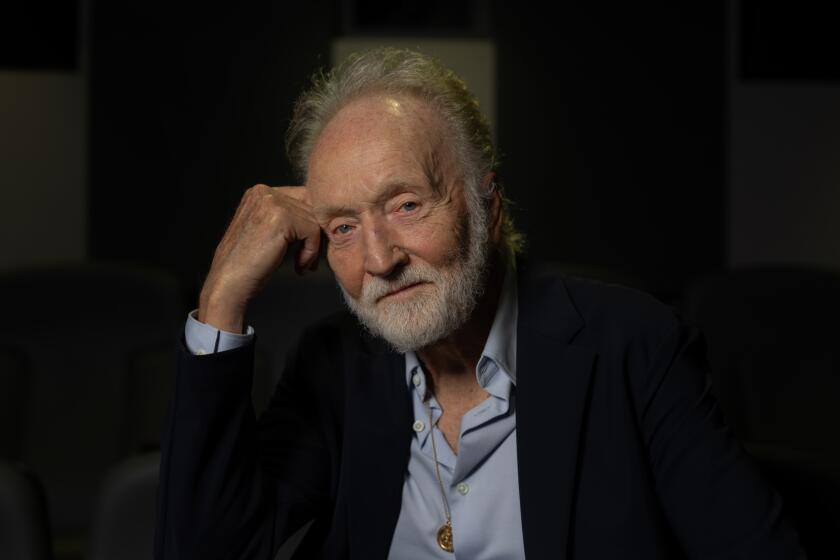Raya is a young warrior princess determined to save the world — she just doesn’t trust a lot of people anymore.
She does believe in Sisu, the legendary dragon whose magic helped save humanity the last time it was threatened. But when Raya finally meets Sisu, the dragon is not quite what she expected.
“From a young age, Raya knows exactly what she wants,” said Kelly Marie Tran, the Vietnamese American actor who voices the titular character in “Raya in the Last Dragon.” “And then she experiences something traumatic and she sort of views the world differently. But the whole time, she’s very much fighting for herself and the things that she believes in.”
Out Friday in theaters and through premier access on Disney+, “Raya and the Last Dragon” is set in a land called Kumandra and is the first Walt Disney Animation film inspired by Southeast Asian cultures. Directed by Don Hall (“Big Hero 6”) and Carlos López Estrada (“Blindspotting”), the film’s screenplay was written by playwright Qui Nguyen and Adele Lim (“Crazy Rich Asians”).
Kelly Marie Tran, Awkwafina and Gemma Chan lead the voice cast for ‘Raya and the Last Dragon,’ which breaks new ground in the Disney princess canon.
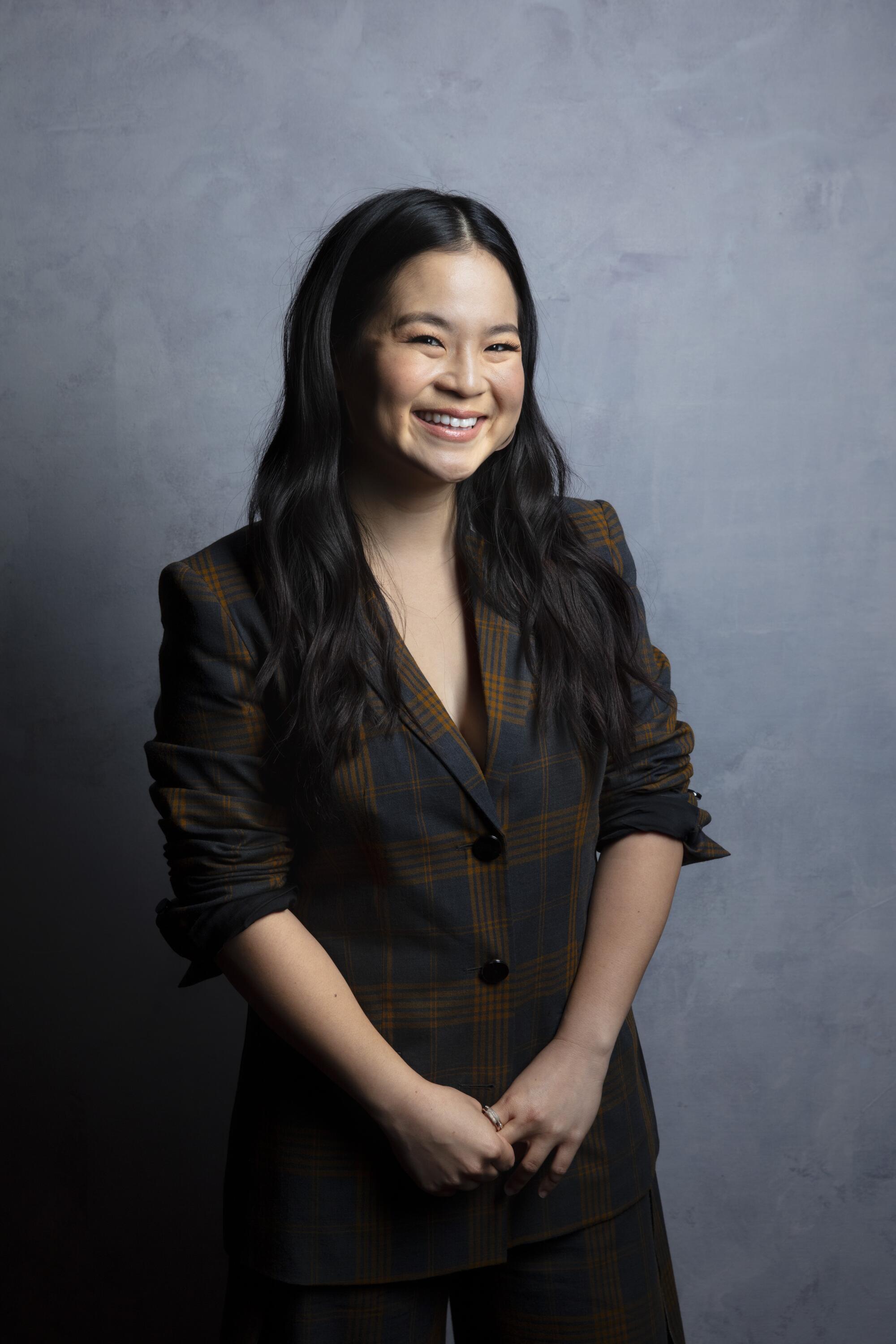
Starring opposite Tran is Awkwafina as the voice of Sisu, who she said is unlike other dragons people encounter in pop culture.
“I don’t think I’ve seen a dragon that knows that she’s imperfect,” said Awkwafina. “She loves openly, loves food and is just kind of goofy. But she has an innocence about her that — thinking about her now — I wish I had a little bit more of, in terms of how she looks at the world and how she looks at people.”
Tran, who came to fame as “Star Wars: The Last Jedi” heroine Rose Tico, appreciated that Raya is allowed to experience a full range of emotions during her journey.
“You get to see her be vulnerable and sad, and then funny and witty and sarcastic, and then like a total badass warrior, and then just viscerally and justifiably angry,” said Tran, “which I didn’t know that I needed to see in a character like this. I don’t think that we normally get to see female characters in this very specific genre of film ever get to be angry.”
Like her fellow modern animated Disney princesses — such as Moana and Elsa — Raya’s adventure is not about romantic love. And Tran believes “‘Raya’ does a really good job of showing us that there are many different ways to be brave.”
“One of those ways is being a warrior, and literally fighting,” said Tran. “And one of those ways is recognizing that maybe you’re being blinded by your own anger or your own trauma and trying to see outside of that.”
Tran and Awkwafina discussed “Raya and the Last Dragon,” their thoughts on Hollywood representation of Asian characters and some childhood favorites in this conversation edited for clarity and length.
Raya and Sisu’s friendship is one of the central elements of this movie. What are your thoughts on their relationship?
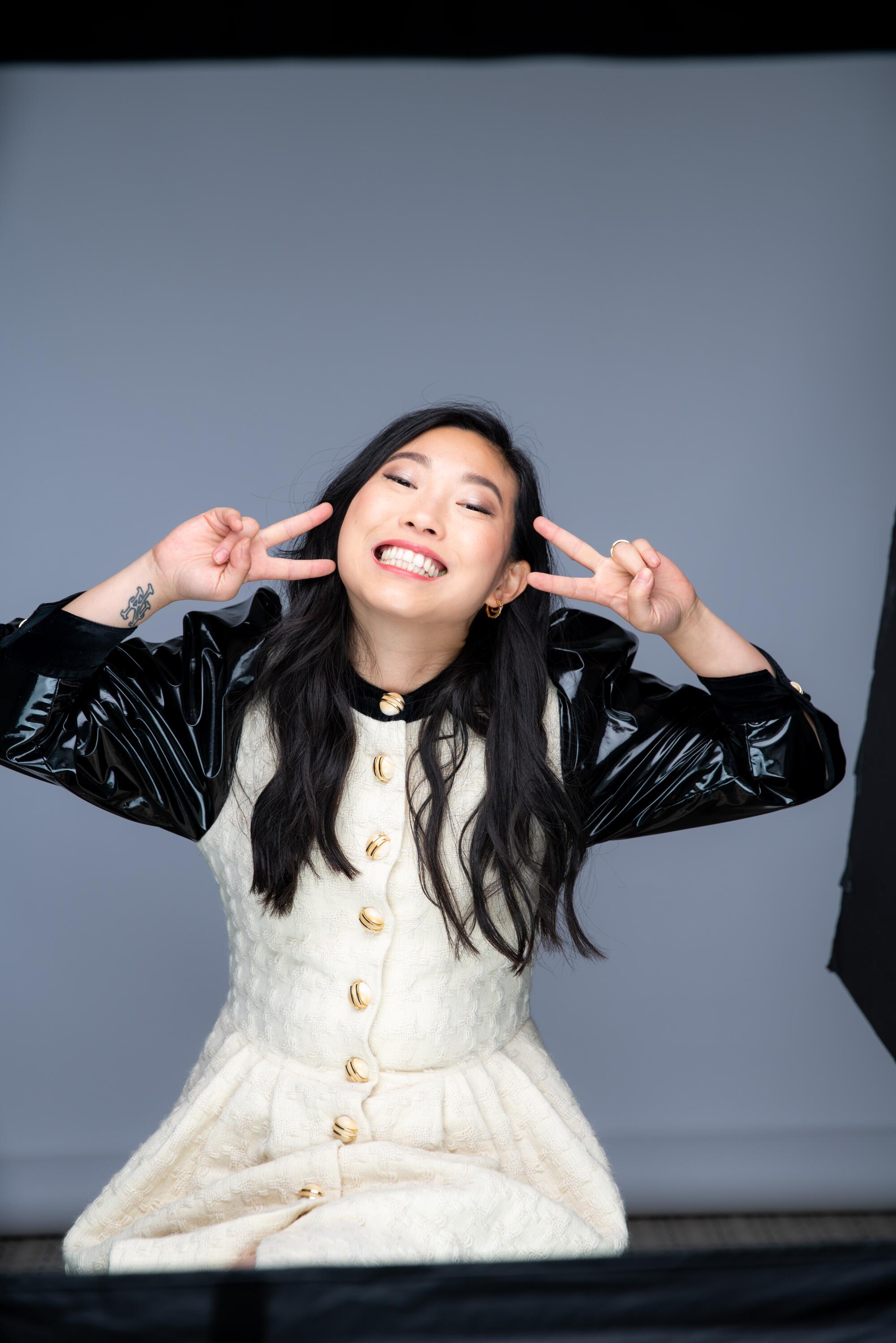
Awkwafina: I love the friendship aspect all around. It just kind of shows you how much trust is needed, and how it can be found in really subtle ways. Even food in the movie resembles friendship and trust and I think the happiest times are over these very warm meals. Sisu and Raya — they really balance each other out, I think, as friends do. There’s one that might be a little bit more trusting, and one that wants to warn that one of being trusting, but at the same time learns that maybe [they] shouldn’t distrust so much and maybe [they] should believe in people more. They have that balance. And I think that exists in every friendship.
Tran: I agree. I think that the coolest part about seeing their friendship, and the way in which they learn from each other, is just exactly what you said, Awkwafina. The idea that we can have two people who have very different views of the world and yet they still respect each other, and they’re still listening to each other, and they change each other, I think, in really good ways. There’s a lesson to be learned there for sure.
The villain is also not quite your traditional villain.
Tran: Namaari rules and Gemma Chan is awesome. Her character is so great. Namaari is this character who at first you might think is a quote, villain, but then you recognize later in the movie, you’re seeing the things that cause her to justify her actions and where she’s actually coming from. And you start to recognize that it really isn’t good versus evil, us versus them, it’s really just all of us are doing our best. Especially now, when the world feels so divided, it’s really important to think [how] maybe there are sometimes things that I am not seeing from someone else’s point of view, and trying to really open my mind to my own biases. That’s definitely a practice and something I’m trying to do every day.
Awkwafina: I think that you know from the beginning that she [is] not the villain in her story. It really just depends on how you see it. And I think she ultimately does make a really good decision at the end and you don’t really see villains make those decisions.
Pop culture doesn’t always recognize that Asians and Asian culture, like Kumandra, is made up of distinct cultures and people. What was it like for you to be able to represent Southeast Asian culture specifically?
Tran: What’s been really cool about this experience is just the level of detail and how meticulous everyone has been about wanting to make sure that we are authentically representing this part of the world. Like when a few people from Disney reached out to me and we had a full hour-long meeting just about the significance of Raya’s hat. When we were talking about how detailed people were being, it just made me feel really good to know that people care that much about what these symbols mean.
The martial arts that you’re seeing being depicted in this film is specifically from Southeast Asia, the food that you’re seeing is specifically from Southeast Asia. And, like you pointed out, Kumanda is made up of five distinct clans and distinct lands that have very specific terrain and environments that are also part of the world. There was an entire story trust that was constantly in communication with the filmmakers to make sure that we were doing our due diligence when it came to representation. And that, to me, is a really big deal.
It also just makes me sleep better at night, you know, to know that everyone working on this movie knew that we were trying to do something different and something important and knew just how much this movie would mean to so many people who don’t get to see themselves a lot. It’s being taken really seriously and I really respect and appreciate that.
Who were some of the characters that you were drawn to when you were younger. Who made you feel seen?
Tran: When I was a kid seeing “Mulan” for the first time, I think it was the first time I saw someone in this space that sort of looked like me. I also loved Pocahontas and Jasmine — sassy pants. There’s so many memorable Disney characters I can probably go on forever.
Awkwafina: One of the first movies I ever saw was “A League of Their Own” and I really loved [Lori Petty’s] Kit Keller. I loved [Geena Davis’] Dottie [Hinson] too, but I always felt more like a Kit Keller. There was always something about women who were misunderstood that really got to me. And then obviously watching Margaret Cho for the first time doing stand-up. At 7 I didn’t understand a lot of her stand-up but the essence of her was so powerful to me that [it] really, really formed me into who I think I am today.
Tran: As a kid I was really into fantasy movies. I loved “Harry Potter.” I loved “Lord of the Rings,” and there’s so many great characters in those movies. I love Samwise Gamgee. I think that he is totally underrated. I think that he’s the hero of those movies and no one really talks about him. Also, Gimli is underrated in those movies. I think that he was so pure of heart and I just think he’s such a cool character. The same with “Harry Potter,” there’s a lot of unsung heroes there. Luna Lovegood is such a great character and also Neville Longbottom.
Tom and Jerry’s violent cat-and-mouse games are a familiar delight, but they’re underutilized in this snoozer of a movie.
Both of you have been the first Asian American fill-in-the-blank. What is that experience like? When did you realize you were the first?
Awkwafina: I think that when you realize that you’re the first, it comes with two different wants and emotions. One is obviously, like, happiness and joy and pride. But then there’s this other side for me — you just really don’t want to be the last. And you really wonder why you were the first. I think everything has that kind of double side.
[And] being the first, if ever, you are kind of in territory then that implies it’s not founded yet, right? So it’s really uncharted waters. And you have no one to really base your career off of or base what problems you may have or feel like you can go to. So it comes with its misgivings. But I think I can safely say that whatever those firsts are, I won’t be the last, and that makes me really happy, because if I can leave anything it would be that.
Tran: I really don’t think we’re aware of being the first anything until someone points it out on, like, the internet or something. But I absolutely agree. There’s sort of this double feeling — of feeling so honored and excited and overwhelmed with just the experience that you get to be someone who is opening that door. And the other side of it is wanting to make sure that you are also leaving the door open for someone else to walk through.
Do these representation milestones feel different when you know it’s something that’s for kids?
Tran: Yes, because when you’re part of something that’s going to have a lot of kids in the audience, I think there is this immediate reverence to knowing what you’re putting into the minds of children who have these spongy brains — who are really soaking everything in — [and] that is something that needs to be taken with responsibility. So I do think that I approach something that is specifically aimed toward children differently.
Awkwafina: I haven’t thought about it in that way. We’ve been asked the question over the course of doing press for this movie [about] how Disney kind of affected our childhoods. And the answer to that is that it’s an indelible part of it. And I think, as a result, it affects us [and] who we are later. So knowing that, and knowing that this could potentially affect children in that way. Thinking about what it would be like to have a Disney Princess like Raya when I was a kid — we had Mulan, obviously, and that was a huge thing to see — but I think just seeing Raya would have meant a lot. And it would have been different.
Pixar’s “Soul” takes us to “The Great Before,” where unborn souls prepare for life on Earth. The filmmakers discuss the unique visual design.
Do you think conversations about representation and diversity have changed over the years or since you started in the industry?
Tran: It definitely has changed absolutely since I was a kid. If you look at the cast involved in this movie — so many of these people are people that are constantly breaking barriers and being the first whatever that is. I will venture to say that I do think that there is progress being made and hopefully this movie is part of that progress. But I will also say that there’s still more work to be done. I don’t think that we can talk about equal representation until we really see that in front of the camera, behind the camera, across all races, socioeconomic classes, abilities, gender identities, the list goes on and on and on. There has been progress, but there’s also more progress to be made.
Awkwafina: When I first entered the industry, I saw a lot of “diversity.” That’s the kind of roles that I was auditioning for that were available at that time — a character that really didn’t have any lines but was a person of color and would kind of sit amongst this group of whatever. That was more what I saw [at first] and then, through the course of my career, that turned into what I would consider “representation.” Characters of substance that are not one-dimensional, that have their own backstories, that are authentically informed, that are told authentically behind the camera by people who originated from [that background]. Movies like “The Farewell” where I’m starring in a movie that is written and directed by Lulu Wang, an Asian American woman. To work with her and to see her in all of those roles was very powerful.
I’m very optimistic about the future and I think that, like Kelly said, there’s still progress to be made. To be a part of these movies, especially like “Raya and The Last Dragon” that broadens that scope of representation to the Southeast Asian community, I’m just really proud.
In Marvel’s “WandaVision,” nothing is as it seems. So we prepared an episode-by-episode guide to the Disney+ series for you to keep handy as you watch.
More to Read
Only good movies
Get the Indie Focus newsletter, Mark Olsen's weekly guide to the world of cinema.
You may occasionally receive promotional content from the Los Angeles Times.

